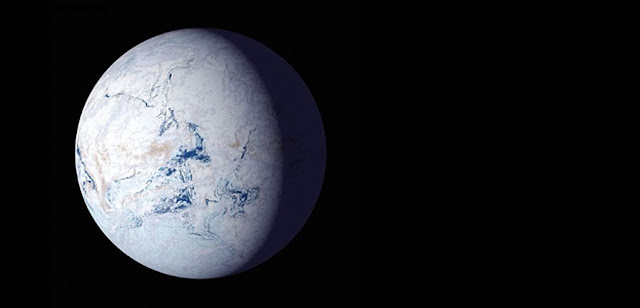
Aspects of an Earthlike planet's tilt and orbital dynamics may severely affect its potential habitability and even trigger ice age where oceans freeze and surface life is close to impossible. [Ice ages on exoplanets can be much more severe than on Earth]
In new study of the planets orbiting in the habitable zones of G dwarf stars - those like the sun, astronomers at the University of Washington found that a planet's obliquity or its orbital eccentricity can affect its potential for life.
A planet's obliquity is its tilt relative to the orbital axis, which controls a planet's seasons; orbital eccentricity is the shape, and how circular or elliptical - oval - the orbit is. With elliptical orbits, the distance to the host star changes as the planet comes closer to, then travels away from its host star.
The Earth hosts life successfully enough as it circles the sun at an axial tilt of about 23.5 degrees, wiggling only a very little over the millennia. But, what if those wiggles were greater on an Earthlike planet orbiting a similar star?
Previous research indicated that a more severe axial tilt or a tilting orbit, for a planet in a sunlike star's habitable zone, given the same distance from its star would make a world warmer. But the team were surprised to find, through their resarch that the opposite reaction can also appear.
"We found that planets in the habitable zone could abruptly enter 'snowball' states if the eccentricity or the semi-major axis variations - changes in the distance between a planet and star over an orbit - were large or if the planet's obliquity increased beyond 35 degrees," said Russell Deitrick, lead author of the study.
"While past investigations found that high obliquity and obliquity variations tended to warm planets, using this new approach, the team finds that large obliquity variations are more likely to freeze the planetary surface," he added.
In short, the study shows that we shouldn't neglect orbital Variations in habitability studies. Orbital dynamics is a major driver of habitability and that habitable zones are insufficient alone to characterise a planet's habitability.
Image Credit: NASA
Original Source: University of Washington





No comments:
Post a Comment